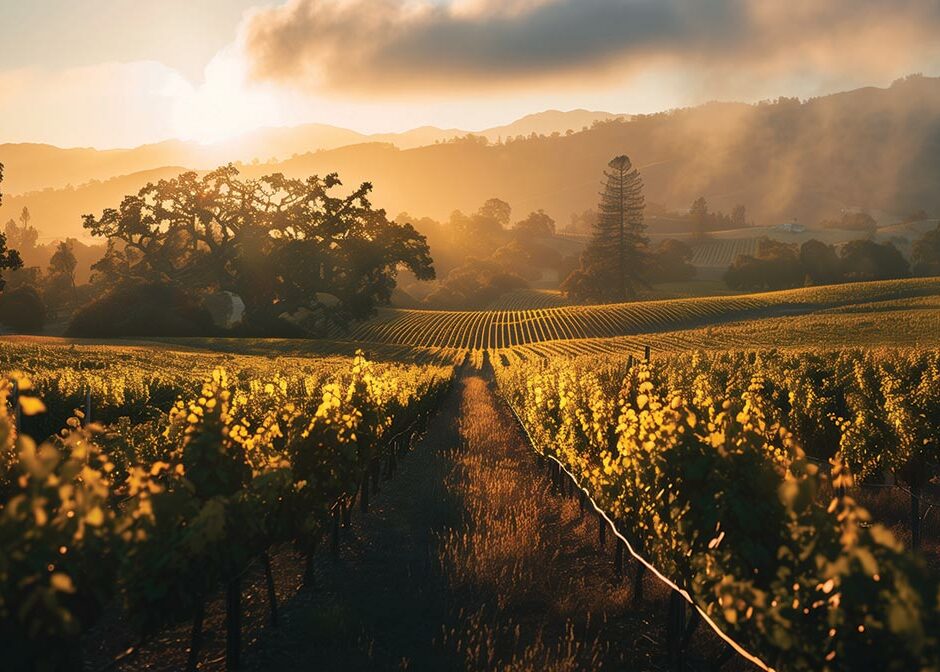

Ryan Robinson, Director of Education, Brescome Barton and Worldwide Wines.
By Ryan Robinson, Advanced Sommelier-CMS, WSET Diploma and WSET Educator
When you’re feeling adventurous and want to explore a new bottle of wine, where do you begin? Shelves are packed with offerings from producers all over the world, each attempting to lure you in with its label and packaging. Are you looking for a wine with a more traditional, classic label or are you ready to try something new, perhaps a bottle with a bright-colored modern label? The search can be daunting, as on average 2,000 new wine brands are introduced to the world market daily!
Start with familiarity. If you enjoy Chardonnay, spot your go-to bottle. Then, within that same section, try to find a bottle from a different wine region or appellation. A wine of the same grape variety but produced in a different wine appellation can bring a wide range in style differences, from a subtle nuanced change to a whole new expression of your favorite grape variety. This is where the fun begins.
Wine appellations are important. They have the potential to give us an idea of what the bottled wine should taste like based on where it was produced. In short, wine appellations tell us where the grapes that went into our wine were grown. These geographic areas of land contain a unique grape-growing environment that is different from any other. The appellation boundaries can be defined by their soil type, geologic and geographic influences, political boundaries and cultural practices of the area—all influencing the style of wine produced.
The concept of the importance of wine appellations is nothing new. Contestably, the first wine appellation in the world was established in the Tokaj region of Hungary by King Károly in 1737, where 22 towns could affix the recognizable name Tokaj to their wine labels. This name signified to everyone that the contents inside contained the “Wine of Kings.” Regulations were established to mandate the viticultural and winemaking practices to be followed if a producer was to use the Tokaj name. These regulations were so defined that a grower had to apply for a license just to plant grapes. Shortly after, in 1756, the Douro Valley of Portugal became a demarcated wine appellation. It wasn’t until 1936 that the French established their modern-day wine appellations.
Since then, this notion of establishing a sense of origin in the context of wine has been adopted globally. Here, in the United States, the wine appellations are called American Viticultural Areas or AVAs and are regulated by the Alcohol and Tobacco Tax and Trade Bureau (TTB). According to the agency, “the TTB designates viticultural areas to allow vintners to better describe the origin of their wines and to allow consumers to better identify wines that they may purchase.”
The first AVA in the U.S. was approved in 1980 in Augusta, Missouri. Surprising to some, it was before the establishment of the Napa and Sonoma AVAs in California. It wouldn’t be until the following year that these regions received AVA status. Connecticut, Rhode Island and Massachusetts were awarded a shared appellation called the Southeastern New England AVA in 1984.
Since the original Augusta AVA, as of May 2024, there are now 273 AVAs in the U.S. Of those, California has the most with 152. All 50 states currently produce wine, which means more proposals for additional AVAs. The Upper Cumberland AVA was the most recently approved in May, making it the first entirely contained Tennessee appellation. Additionally, there are 19 more AVAs that have been accepted as perfected and are awaiting approval, with California, Washington and Texas commanding the most applications.
Wine produced domestically is ripe with diversity. Quality wines are now being produced from Hawaii and Alaska to Florida. If you have been purchasing the same Chardonnay from your wine shop, add a little excitement and try a wine from a different appellation or AVA. The Washington or Virginia Chardonnay just might become your new favorite.
Ryan Robinson is the Director of Education for Brescome Barton and Worldwide Wines in Connecticut. He is also the Wine Director for Cornerstone Restaurant Group in North America and South Korea, and an Adjunct Professor at the University of New Haven. He holds the credentials of Advanced Sommelier-CMS; WSET Diploma and WSET Educator in Wine, Sake and Beer; Rioja Wine Educator; Wine Scholar Guild Educator and Spanish Wine Specialist; and Certified Scotch Whisky Professional from the Council of Whiskey Masters.



